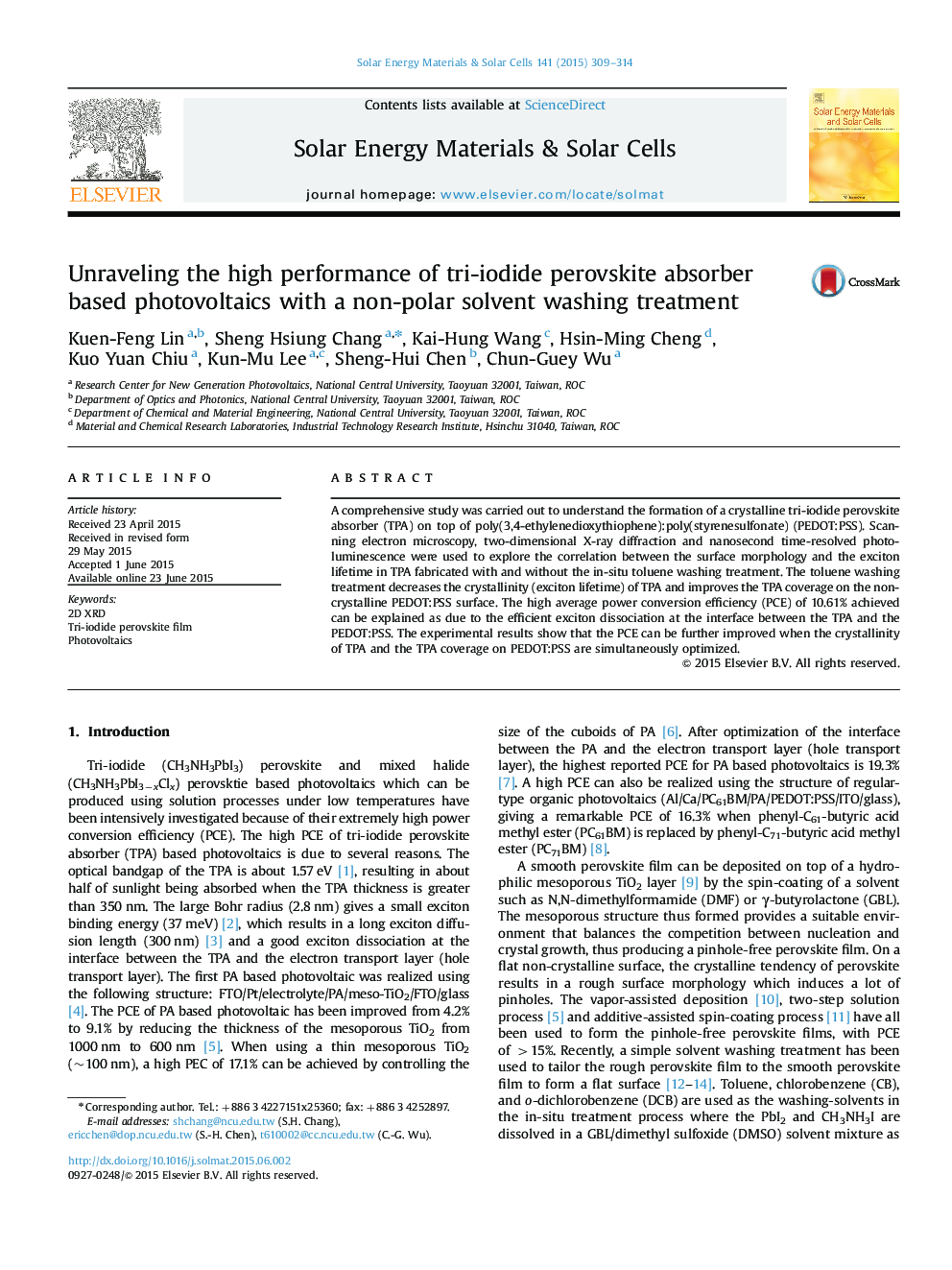| Article ID | Journal | Published Year | Pages | File Type |
|---|---|---|---|---|
| 77754 | Solar Energy Materials and Solar Cells | 2015 | 6 Pages |
•The correlation between morphology and crystallization of perovskite film is studied.•A high average power conversion efficiency of 10.61% was achieved.•PL data shows that excitons efficiently dissociate at perovskite–PEDOT interfaces.
A comprehensive study was carried out to understand the formation of a crystalline tri-iodide perovskite absorber (TPA) on top of poly(3,4-ethylenedioxythiophene):poly(styrenesulfonate) (PEDOT:PSS). Scanning electron microscopy, two-dimensional X-ray diffraction and nanosecond time-resolved photoluminescence were used to explore the correlation between the surface morphology and the exciton lifetime in TPA fabricated with and without the in-situ toluene washing treatment. The toluene washing treatment decreases the crystallinity (exciton lifetime) of TPA and improves the TPA coverage on the non-crystalline PEDOT:PSS surface. The high average power conversion efficiency (PCE) of 10.61% achieved can be explained as due to the efficient exciton dissociation at the interface between the TPA and the PEDOT:PSS. The experimental results show that the PCE can be further improved when the crystallinity of TPA and the TPA coverage on PEDOT:PSS are simultaneously optimized.
